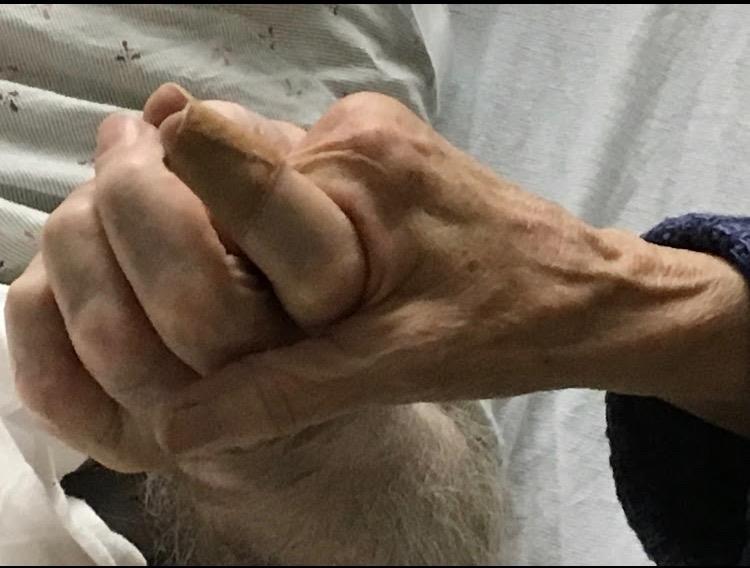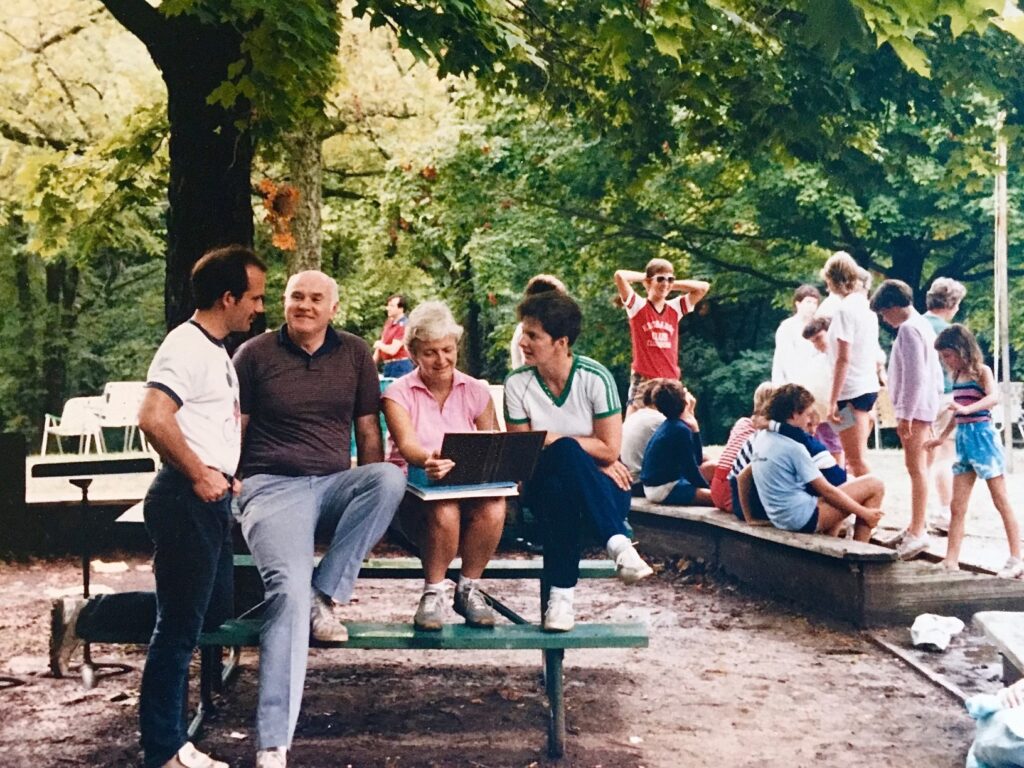
“I shall die, but that is all I shall do for death.”
Edna St. Vincent Millay
This article returns the SMC reader to the familiar theme of Resilience, but as the title, “Resilient Dying,” suggests, it covers a different aspect of it than usual. I found that covering this topic about a towering figure in my life, took a little more space than usual. Maybe you can read this one over two cups of coffee rather than the my usual articles that fit into the space of one.
In my teens and early twenties, my mentor/role model, Jim Morris, taught me so many important things about how to live. During my handful of visits with him over his last three months in Hospice, he showed me how to die.
On my way to those visits, I would stop at the memory care facility where my mom and a life-long family friend, Father Ossola, still give each other a hard time and hard laughs. About six weeks ago, I reported to Jim that I had just seen Father Ossola, his friend of many years. As if I had just announced his winning lottery ticket, Jim perked up. “Father Ossola! How is he?” “He’s really happy!” I responded, trying to match his enthusiasm. “He is? That’s great!” It occurred to me to ask, “Jim, are you happy?” Looking back, I think that question was meant to initiate an impromptu death-bed script as befits a counselor’s approach to visiting a dying friend. I suppose that I was imaging some obvious response like, “Tom, this really sucks!” That would lead to my next line… something kind of Hospice-y, aimed at talking about death, which in turn, could lead to a conversation about the potential relief of “shuffling off this mortal coil”… yada… yada…yada… Jim wasn’t having it.
In response to my question about his “happiness,” his eyes wandered off to a distant horizon located on the northwest corner of his Hospice room’s ceiling. “Here it is.” I thought, “The stroke-related dementia! I’ve lost him!” Ten seconds later, Jim’s intelligent eyes came down off the ceiling and rested on me. “I was just thinking,” he mused. “What is it that would make me unhappy?” I took the bait. “I don’t know, Jim, what would make you unhappy?” Not even a second passed, “NOTHING!” He loudly proclaimed. With that, he laugh-criedat the precious piece of gold he had just uncovered. Gobsmacked! I was gobsmacked!
Here sat a Notre Dame Hall of Fame athlete, who for decades, played tennis, and walked many miles a day… stuck in a 15’x15’ room from which he couldn’t escape—not alive anyway. Five years of cancer and several recent strokes had winnowed his frame, as well as his memory. And unless he was pimping me, “NOTHING” was making him unhappy! A month after his death, I’m still marveling at this Grade A, Blue Ribbon, Gold Medal Resilience in the face of death. In that moment, I felt like the woman in the diner scene from When Harry Met Sally, “I’ll have what he’s having!” But here was the fact. It wasn’t what he was having in “this” moment that accounted for his enduring happiness in the midst of diminishment and death. It’s what he has “been having” over and over again for many decades that accounted for this Tungsten Steel psycho-spiritual hardiness.
Any French baker at a Boulangerie Traditionnelle knows that only four ingredients are required to make a delicious baguette: flour, yeast, salt, and water. Jim’s recipe was just as simple: a thing I’ll call “an intentional joyful positivity,” a vast and deep array of relationships; loving self-donation to something and someone meaningful; and finally, the thing that suffused, and fed the first three things… a life-long, whole-hearted devotion to a robust and grounded spiritual life.
I’ve been observing Jim’s recipe for how to live since my adolescence, which come to find out, ends up doubling as a pretty good recipe for how to die… an existential two-for… of sorts.

A Tease for Next Week
The health care ethicist/theologian, Charlie Bouchard, OP, has researched and written about the ancient spiritual tradition of praying for a happy death. Through the parable of Jim Morris’ life, it would appear that a person can do more than simply petition God for that grace. Stay tuned. In the next several weeks, SMC readers will take a deeper dive into our case study subject, Jim Morris’ life. It’s my bet that you will pick up some new tools or sharpen some old practices to enhance the resilience and happiness of your own life. I am also betting, that like Jim, you will eventually discover you have stumbled into a two-for… during what Elizabeth Kubler Ross called “the final stage of growth.”
